B.C.’s new seat shakes up the Southern Interior as final riding proposal sparks concerns
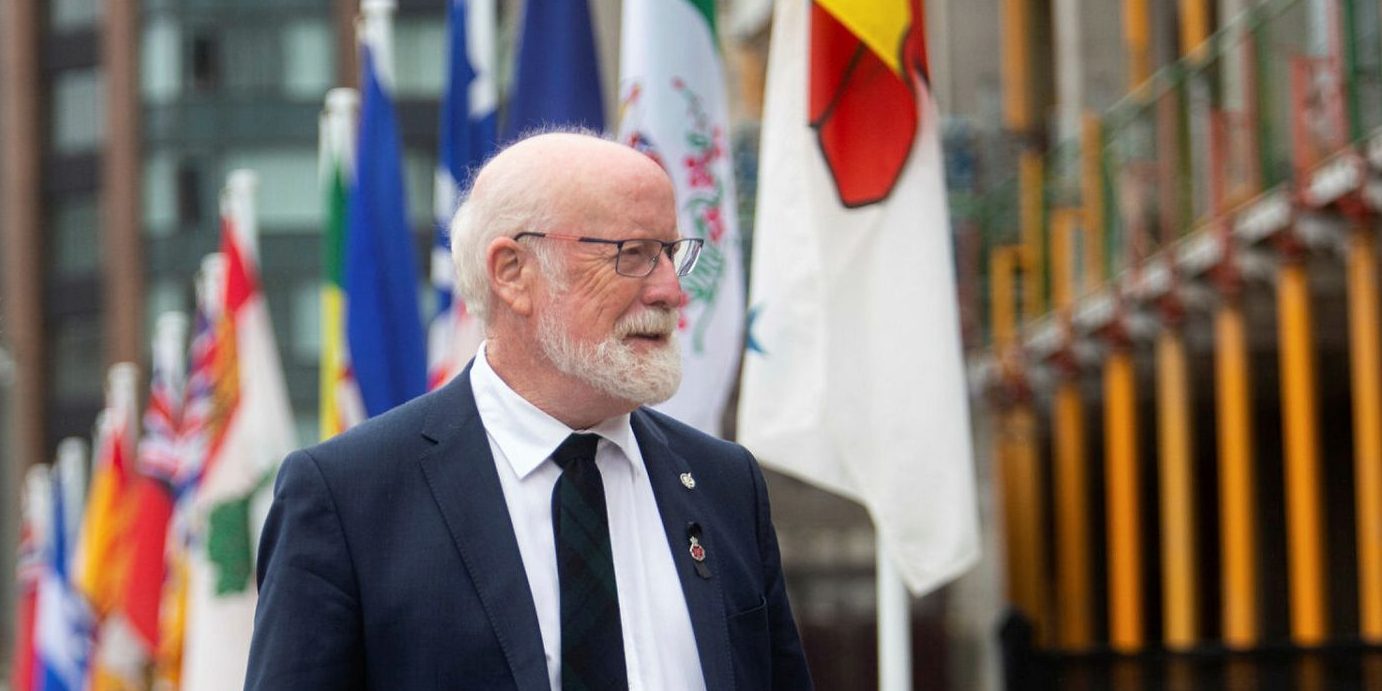
The addition of one new seat in British Columbia means significant changes are in store for the province’s Southern Interior, and NDP MP Richard Cannings says he’s concerned residents won’t have a chance to weigh in on some “completely different” boundaries proposed in the redistribution commission’s final draft.
“That’s, to me, the kind of flaw in the system, where they can go, take your suggestions for the draft process and try to deal with them, but now they’ve done something far more drastic and there’s no public input at all,” said Cannings (South Okanagan–West Kootenay, B.C.), noting that the only remaining opportunity to challenge the final proposed boundaries lies with Members of Parliament, who are able to raise an objection with the Procedure and House Affairs Committee (PROC).
After PROC hears from MPs, it will table a report with recommendations that gets returned to the redistribution commission to consider before finalizing the new riding map. Generally speaking, major changes at this late stage in the process are historically unlikely.
In the commission’s initial proposal published in May, modest changes were suggested to South Okanagan–West Kooteney overall, but a boundary shift on its western end would have divided the city of Penticton—something Cannings said was the focus of feedback from constituents during public consultations.
“Penticton’s a small town and there didn’t seem to be any real pressing reason why you would have to cut it in two … and pretty much everybody there in Penticton and the surrounding neighbourhoods was against that,” he said.
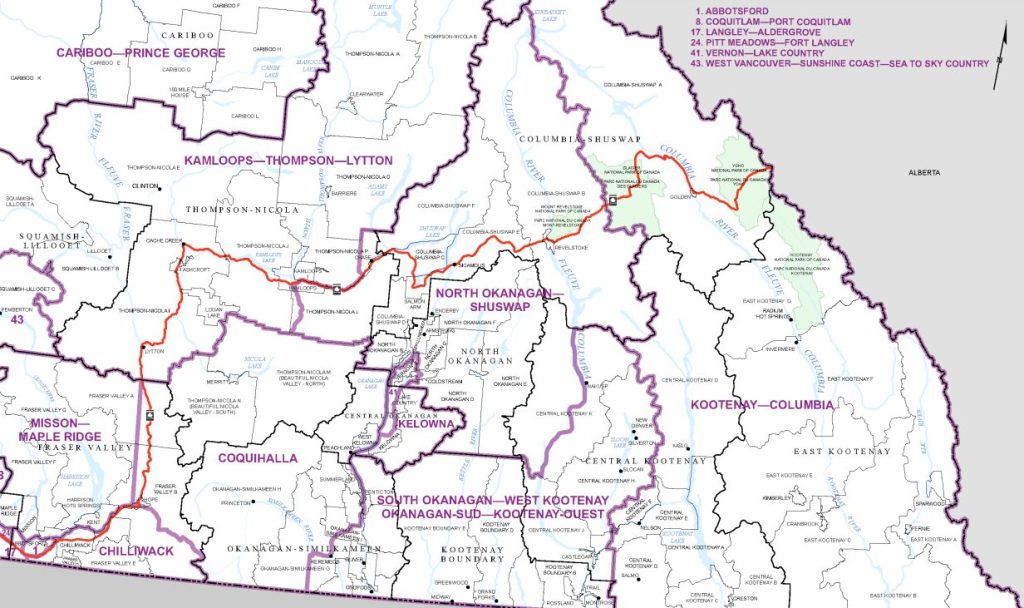
The commission “fixed” that in the final proposal tabled in the House of Commons on Feb. 8, said Cannings, but “instead of making some little surgical moves here and there to deal with that, they have created a completely different new riding on both west and east sides, and now there’s no public input process.”
To the east, the final draft would move the part of the Central Kootenay region that’s currently in Cannings’ riding into the proposed riding of Vernon–Monashee, which is otherwise made up of parts of the current ridings of Kelowna–Lake Country and North Okanagan–Shuswap. On the western end, it would also add the entire Okanagan–Similkameen region to his riding, of which Cannings currently represents a small fraction, with the rest in Conservative MP Dan Albas’ riding of Central Okanagan–Similkameen–Nicola. In turn, Cannings’ riding would be renamed Similkameen–West Kootenay.
B.C.’s new seat—which will bring the province to 43 seats overall—is being added to the Southern Interior where Cannings’ riding sits.
To fit it in, final proposed changes in the region include the major geographic expansion of the current riding of Kamloops–Thompson–Cariboo, while Conservative MP Mel Arnold’s riding of North Okanagan–Shuswap and Conservative MP Rob Morrison’s riding of Kootenay–Columbia would each be essentially split. Ground from those two ridings, as well as the part of Central Kootenay that Cannings is set to lose, would make up the bulk of three proposed ridings: Kamloops–Shuswap–Central Rockies, Columbia–Kootenay–Southern Rockies, and Vernon–Monashee.
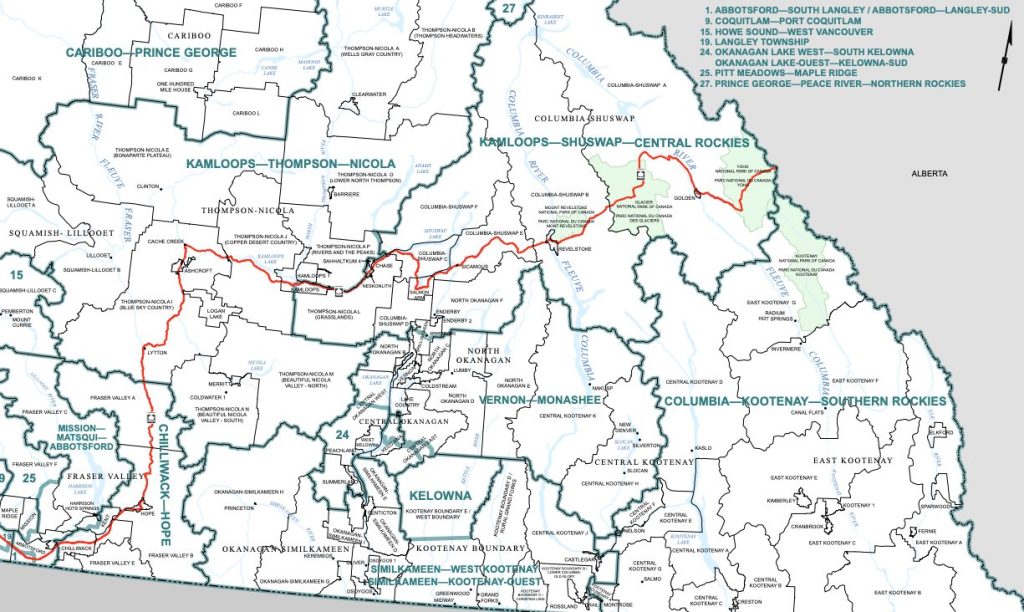
While Cannings said the loss of Central Kootenay and the addition of Okanagan–Simlkameen are concerns, more so is the proposal to carve out a small area in the southeast corner of his riding.
An area dubbed “Kootenay-Boundary A,” which includes the villages of Montrose and Fruitvale, is set to be swept into the proposed new riding of Columbia–Kootenay–Southern Rockies—largely the southern half of the current riding of Kootenay–Columbia. Cannings said both villages are “extremely closely tied” with the city of Trail, which is set to stay in his riding, and noted the MP whose riding they’re set to join, Morrison, currently has his constituency office in Cranbrook, an almost three-hour drive away.
“Most people [from Montrose and Fruitvale] would work in Trail. It’s literally just down the road,” he said.
Cannings also highlighted as a concern the removal of an area on the northern outskirts of Castlegar, which also sits in the southeast corner of his riding. While Castlegar would remain in his electoral district, those outskirts would go to the proposed Columbia–Kootenay–Southern Rockies riding.
“I don’t envy the commissioners their job, but I think that community of interest should be a higher priority than those numbers,” said Cannings, referencing the redistribution commission’s efforts to keep the population of each riding as close as possible to the province’s electoral quota—a figure determined by dividing the total population of the province by the number of seats allocated to it.
Under the Federal Boundaries Readjustment Act, commissions are charged with making “every effort” possible to keep ridings within a 25 per cent variance above or below that quota, though most strive for even lower variances.
With five million residents, the electoral quota for B.C. this year is 116,300 people per riding. The final proposal would leave Cannings’ riding just 0.3 per cent above that quota.
MPs from across Canada have criticized the electoral redistribution process this year—specifically, the fact that the act only provides for public consultations to be held on the initial proposal, and that the only opportunity to provide feedback once final proposals are published is through MP objections at PROC. In Nova Scotia and Manitoba, those concerns are tied up in obligations under the United Nations Declaration on the Rights of Indigenous People and the need to ensure affected Indigenous communities are properly consulted.
In an email response to an interview request from The Hill Times, Conservative MP Dan Albas noted the significant changes proposed to his riding, which would be “reallocated into five different ridings as the result of this latest report.” He did not offer comment on his view of those changes, but said he looks forward to hearing community feedback. Response from his office indicated that he’s yet to determine whether he’ll raise an objection at PROC.
Conservative MP Frank Caputo (Kamloops–Thompson–Cariboo, B.C.) said given his region’s rapid growth, “we knew that there were going to be changes,” and overall, he expressed acceptance for the changes proposed.
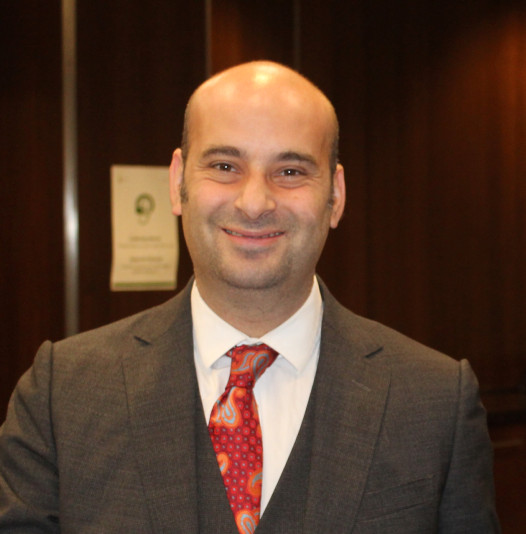
“For me, it’s something I try not to get caught up in. The commission had a job to do, they did it, and we’ll deal with that in the next election,” he said.
That said, Caputo didn’t rule out raising any objections at PROC and said the final proposal is still being discussed among the Conservative B.C. caucus.
“If anybody files an objection, whether it be from my party or from another party, that can have a domino effect. So, I’m not assuming anything at this point,” he said.
The expansion of Caputo’s riding includes the addition of most of the current riding of Mission–Matsqui–Fraser Canyon, which would become the significantly smaller riding of Mission–Matsqui–Abbotsford, sitting entirely within the Fraser Valley and absorbing most of Conservative MP Ed Fast’s current riding of Abbotsford.
Those fond of the name of the nearby riding of West Vancouver–Sunshine Coast–Sea to Sky Country will be disappointed to know that while the final proposal keeps that riding’s borders largely intact, a new name has been suggested: Howe Sound–West Vancouver.
A small area of West Vancouver–Sunshine Coast–Sea to Sky Country that includes Capilano Indian Reserve No. 5 is set to be moved into North Vancouver, which would be renamed Capilano–North Vancouver.
Notable changes in Vancouver
The final B.C. redistribution proposal also includes some notable changes for the Greater Vancouver Area, particularly when it comes to the Liberal-held ridings of Vancouver Quadra and Vancouver Granville.
Currently, these two districts sit side by side, sharing an east-west border. Unlike the first proposal, which maintained that orientation and made only minor adjustments, the final one would see these ridings stacked one on top of the other, with the proposed Vancouver West Broadway district taking the northern halves and the proposed riding of Vancouver Arbutus taking the southern ends.
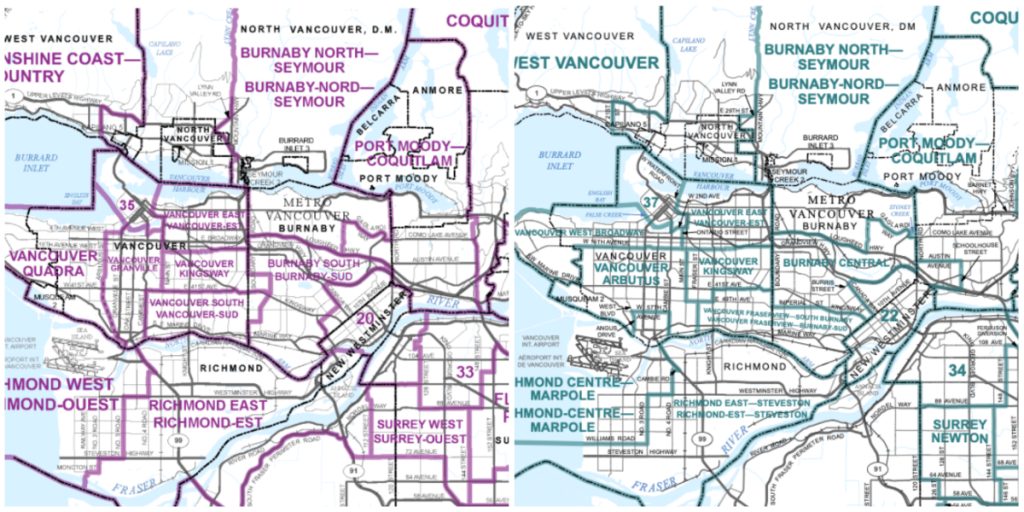
Fisheries and Oceans Minister Joyce Murray’s (Vancouver Quadra, B.C.) office did not respond to an interview request, and Liberal MP Taleeb Noormohamed’s (Vancouver Granville, B.C.) said he had no comment.
The commission also backed away from its initial proposal to have the current riding of New Westminster–Burnaby straddle the Fraser River by picking up ground from Surrey Centre.
In response to this first pitch in May, NDP MP Peter Julian (New Westminster–Burnaby, B.C.) had noted a similar, ill-advised change was proposed, and ultimately abandoned, during the previous redistribution effort. As he had hoped for, those changes have been reversed in the final draft, with the proposed riding of New Westminster–Burnaby–Maillardville sticking to the north side of the river.
Julian’s riding is instead set to lose a few city blocks in its northwest corner, which will be split between the proposed ridings of Burnaby Central (the northern half of Burnaby South) and Vancouver Fraserview–South Burnaby (which largely combines the southern half of Burnaby South with the current riding of Vancouver South).
The Hill Times






 LICENSING
LICENSING PODCAST
PODCAST ALERTS
ALERTS













